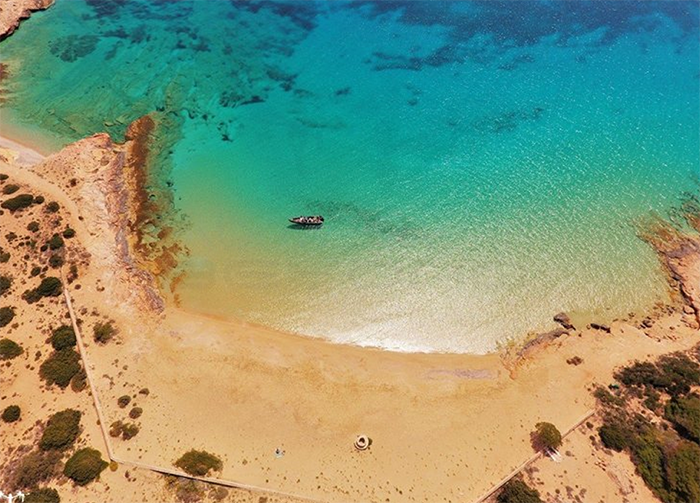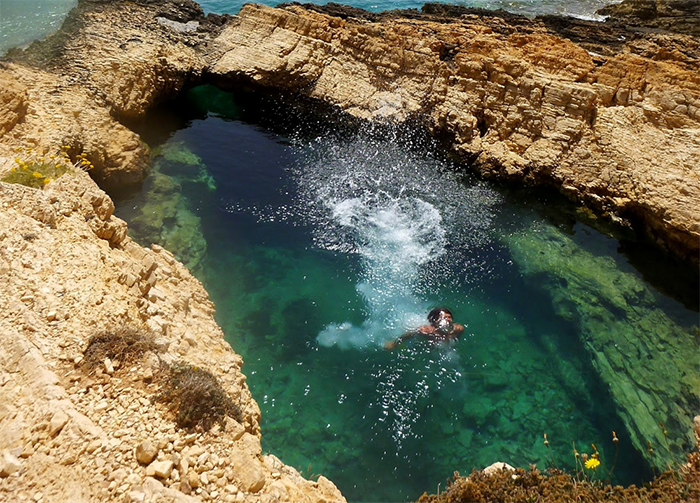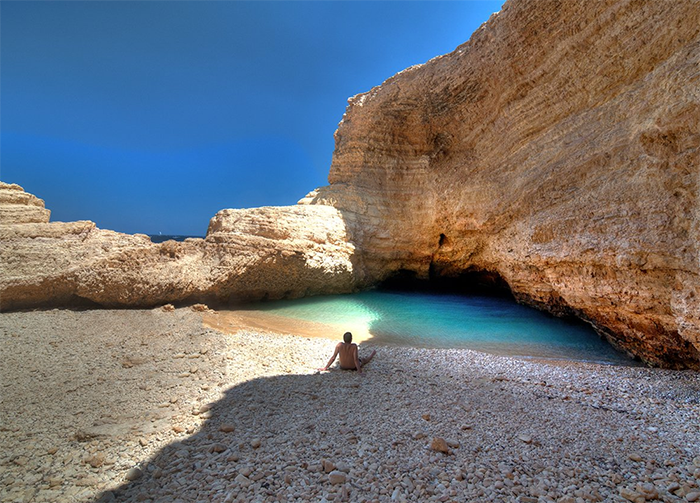A Day on Koufonisia: Greece’s Secret Isles

The famous Greek beach destinations such as Mykonos and Santorini are some of the most popular destinations here. However, with 6,000 islands in Greece, scattered in the Aegean and Ionian Seas, of which only 227 are inhabited, there is so much more to discover and to marvel at.
Hidden away between its larger siblings, the Cycladic islands of Naxos and Amorgos, Koufonisia is made up of two tiny islets. Their names make a lot of sense: Ano and Káto meaning Upper and Lower. The two are separated by a 200-metre sea channel.
There is also a third and smallest spot of land, Keros, however it’s off-limits to visitors – archaeologists have requisitioned the site to investigate the remains of ancient rituals here.
There are many boats that travel in the area; the local restaurants rely entirely on the local fisherman, so your food here is always fresh!
Koufonisia is a now rare place, where almost no one accepts credit cards so be sure to carry enough cash with you. Both islands have plenty of old-fashioned taverns with authentic Greek food and drinks.
Too far from Athens to lure daytrippers into the Aegean, there wasn’t even a direct ferry to any of the Koufonisia islands until three years ago. Now, seasonally, there’s a daily four-hour sailing on a high-speed ship from Piraeus. Yet even now, the isles are not yet deluged with visitors, Greek or otherwise.
Koufonisia isn’t only an untouched world but also fascinating historically. It became a sought-after staging post during the trade wars between Venice and the Ottoman Empire in the 16th century. With fewer than 400 full-time inhabitants here, Koufonisia is no longer turbulent, but paradise in the Aegean Sea. Strolling around the steep streets of Pano Koufonisi, rimmed with boxy, whitewashed buildings, shutters picked out in bright blue, it evokes a different kind of Greece today.
The prime lure of Koufonisia is its astonishing beaches. Since there are few real roads, and little traffic, you can either hike across the island to its various sandy hideouts, or better still take one of the local ferries which leave regularly from a small hut on the main port.
You should definitely visit the beach here called Pool. True to its name, it’s small narrow gulfs with openings on the rocks, where one can enjoy a swim in waters, as clean and calm as the water in a swimming pool. It looks magnificent!
Gala beach is another natural wonder you must see here. It’s a small pebbled beach in a cave, connecting to the sea through a narrow opening. Gala means milk in Greek; the name of the beach comes from the frothy waves bursting onto the rocks. Nothing like you’ve seen before!

Platia Pounda or Italida, which means Italian lady, one of the popular beaches, is basically a nudist beach (although if you wear clothes you will not feel like a fish out of water.) It’s a sandy beach but you’ll find plenty of rocks and sand dunes to explore here as well.

Athens is served from Australia by … Airlines (ifly.net.au). High speed ferries run daily in season from Piraeus port, near Athens (hellenicseaways.gr; from €22 one-way).




